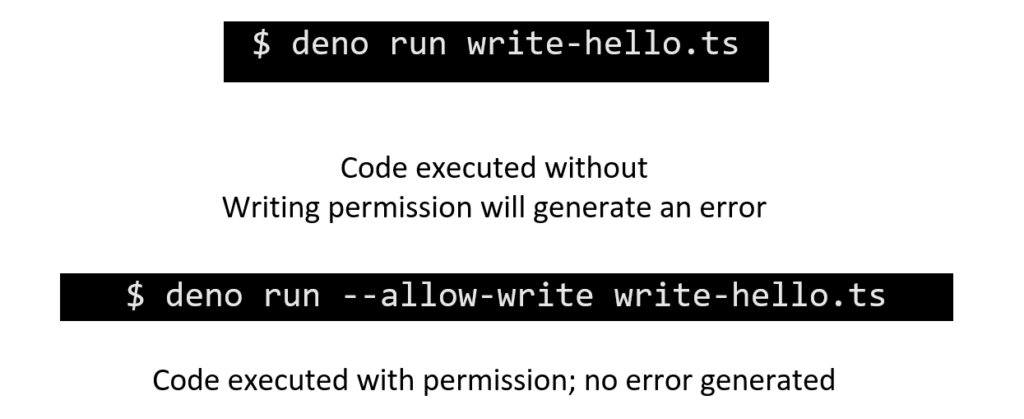DENO VS NODE

NodeJS is a runtime built with Google’s v8 engine, which allows JavaScript to be run without the need to be interpreted from a browser, which has allowed the use of JavaScript to be extended beyond the development of the client side by venturing into servers, mobile applications, console applications and also to enhance frontend development by implementing libraries and frameworks such as angular, react and VueJS. These new areas together with the presence of vanilla JavaScript in web development have made it a powerful tool for development. However, NodeJS has some shortcomings, such as security modules and dependencies. To solve these problems, Ryan Dahl, creator of NodeJS, worked for a few years in Deno, using Rust, Tokyo, Typescript and v8.
As opposed to NodeJS, Deno by default runs its code in a sandbox, which means that the runtime has no access to the file system, network, script execution and environment variables.
An example of this is when you want to write a file, you need to give Deno permissions to access that file in which you want to write in order to execute the script successfully.

In the same way there are different flags which can be used to access different properties which are not automatically blocked as mentioned above. Some of these are “–allow-net”, –allow-env” and “–allow-run”.
Another problem solved by D eno is the decentralization of packages, avoiding the use of package managers such as npm and yarn and importing them directly from the developer’s URL, avoiding the use of package.json or node modules.
In spite of all the advantages that Deno presents, enough time has passed for NodeJS to be adopted not only by many developers, but also by many projects, but the growth that the diverse companies have presented and the interest to incur in different technologies is so ample that it is very possible that Deno in a few years has a great presence in the world of the development.
Posted by

Diego Cañon – Backend Developer
